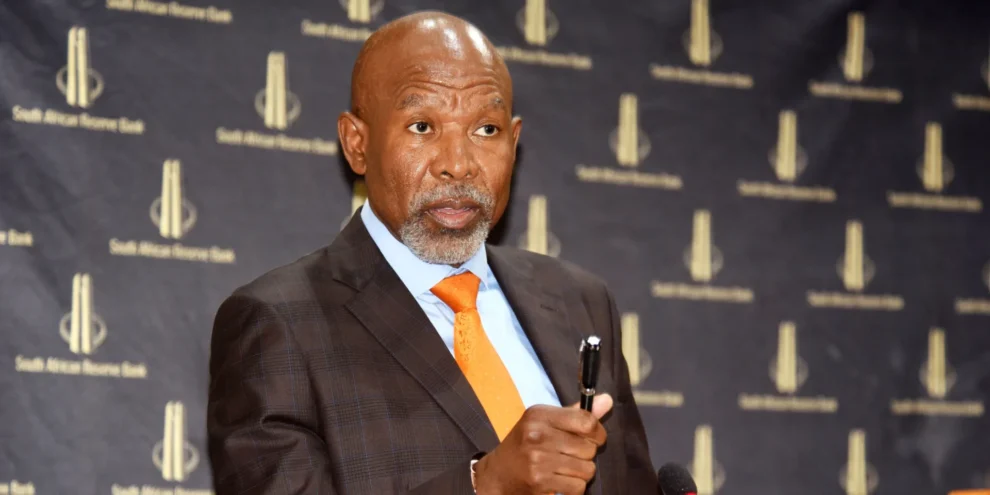The cost of borrowing in South Africa has gone slightly higher as interest rates rose again in spite of softening consumer price inflation amid the devastating rolling power cuts which have shrunk any prospects of economic growth.
The South African Reserve Bank (Sarb) yesterday in a split decision raised its benchmark interest rate once again by 25 basis points to 7.25%, although below the market estimates of 7.5%.
This marks the eighth consecutive rates hike since policy normalisation started in November, 2021 and means that the prime lending rate on a base home loan will now increase from 10.5% to 10.75% per annum.
The monthly loan repayments on a 20-year-long R1 million bond will now increase by an extra R168 from R9 984 to R10 152 a month.
Sarb Governor Lesetja Kganyago said the bank continued to assess risks to the inflationary outlook skewed to the upside, as the war in Ukraine rages on.
Kganyago said the bank now expected inflation to be more firmly around the mid-point of the target band of 3-6%, but only in the fourth quarter of 2024.
The bank’s forecast of headline inflation for 2023 remains unchanged at 5.4% and is slightly higher at 4.8% for 2024, but the forecast for core inflation is somewhat lower at 5.2% in 2023 and down from 5.5%.
Kganyago said global price-levels remained elevated as Russia’s war in Ukraine continued, despite some easing of global producer price and food inflation.
“The oil market is expected to remain tight, particularly as China’s economy rebounds. Electricity price inflation has shifted significantly higher this year and next, while other administered prices continue to present clear medium-term risks.
“Domestic food-price inflation continues to surprise higher and may again. Load shedding may have broader price effects on the cost of doing business and the cost of living,” the governor said.
“Given sticky petrol and food price inflation considerable risk still attaches to the forecast for average salaries and hence for the trajectory of core inflation,” Kganyago said.
In spite of these rising costs, economists said the Sarb rate-hiking cycle may be nearing an end as the Monetary Policy Committee (MPC) moved by less than expected.
Standard Bank’s head of macroeconomic research Elna Moolman said global and domestic inflation pressure was moderating, and inflation should be back inside the target range relatively soon.
“We don’t currently forecast further rate hikes, but there is a risk that there might be one more 25 basis points rate hike at the March meeting,” Moolman said.
“The March MPC decision will likely depend on the next two inflation datasets, and the Bureau for Economic Research’s first quarter inflation expectations in particular. Most importantly, we are either at or very close to the peak in the rate-hiking cycle,” she added.
FNB also concurred that while central banks around the world may continue to raise interest rates in their fight against inflation, there were clear indications that this rate-hiking cycle might be coming to an end.
FNB chief economist Mamello Matikinca-Ngwenya said the MPC had put emphasis on the importance of improved-risk sentiment, softening price pressures and an unfolding global economic slowdown.
“This slowdown will exacerbate weaker local activity while structural impediments related to energy supply and logistics persist,” she said.
“We still believe that the MPC will reach the terminal of the current hiking cycle in the first quarter of 2023 and that if another 25 basis points hike is delivered in March, there should be space to support the economy before year-end,” Matikinca-Ngwenya said.
Sentiment in the market has been that perhaps the central bank could have paused as a reprieve to the economy and consumers, especially in view of the exacerbated Eskom energy crisis.
Kganyago said the bank now forecasts gross domestic product (GDP) growth of only 0.3% for 2023 as a result of severe load shedding, and other logistical constraints.
“Given the scale of load shedding, the SA Reserve Bank estimates that it deducts as much as 2 percentage points from growth in 2023, compared to the previous estimate of 0.6 percentage points,” Kganyago said.
The global economy is also less supportive of domestic economic growth, as a recession is expected in at least a third of global economies this year.
North West University Business School economist Professor Raymond Parsons said the MPC therefore made the right judgement call in limiting its pace of interest rate increase for now, as danger exists in “overkill” in monetary policy if interest rate rises are too aggressive.
“Serious headwinds for the economy this year not only include intensified load shedding but also higher input costs, weak confidence-levels, elevated uncertainty, squeezed profit margins and potential lay offs,” Parsons said.
“Although the rate of inflation is flattening out, the MPC remains concerned about inflationary expectations. Lower growth expectations in 2023 may nonetheless help to ease pressure on costs and prices,” he said.
















